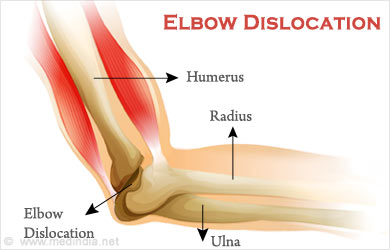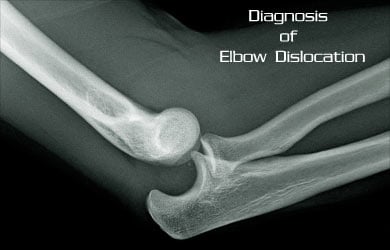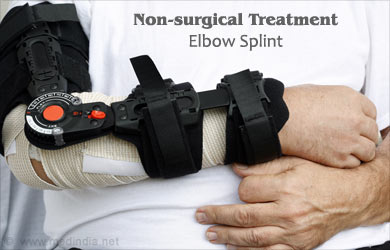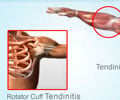- About Elbow Dislocation - (http://www.orthop.washington.edu/?q=patient-care/articles/trauma/elbow-dislocation.html)
- Elbow Dislocation - (http://orthoinfo.aaos.org/topic.cfm?topic=a00029)
What is Elbow Dislocation?
The elbow is a stable joint where three bones - the humerus of the upper arm and the ulna and the radius of the forearm - come together. These bones are kept in proper alignment with the help of ligaments and muscles. It is mainly a hinge joint, though some amount of rotation also takes place at the joint.
The elbow is the second most common joint after the shoulder joint where dislocations occur. Elbow dislocations may be classified as:

- Partial or complete. As the name indicates, partial dislocation, also called subluxation, involves partial separation of the joint surfaces while a complete dislocation involves a complete separation of the joint surfaces.
- Simple or complex. If the radius and the ulna are separated from the elbow but if there are no associated fractures, the dislocation is considered simple and requires no surgery. If dislocation occurs with fractures involving the radius, the ulna or the humerus, they are complex and may require surgery to restore stability.
Causes of Elbow Dislocation
Elbow dislocations are mostly caused by accidents such as a fall from a height or high-impact motor collisions. They typically occur when you fall onto an outstretched hand or when you reach forward to minimize the impact of force during a car accident.
Symptoms of Elbow Dislocation
Symptoms of elbow dislocation include:
- Extreme elbow pain

- Swelling in the injured arm
- Tingling /numbness in the forearm
- Deformity at the site of injury
Diagnosis of Elbow Dislocation
Dislocation of elbow is a serious health issue and requires immediate medical attention. Your doctor will take the medical history after which he will do a physical exam of the arm and look out for tenderness, swelling, bruising and deformity. He will also examine the skin and evaluate blood circulation to the arm. He will also check for numbness and immobility as they could be an indication for underlying nerve injuries.

Your doctor will order an X-ray to evaluate the extent of injury to the elbow. In some cases, minor fractures associated with elbow dislocations will be missed on an X-ray and for this reason the images need to be reviewed well. If this is not possible, a computed tomography (CT) scan may be carried out; this is usually carried out after the dislocated elbow has been put back in place.
Treatment of Elbow Dislocation
Elbow dislocation is an emergency injury that needs immediate treatment. The immediate focus of treatment is:
- To return the bones of the elbow to their normal alignment
- Eliminate pain
- Restore function of the injured arm
Nonsurgical Treatment
If an elbow dislocation has no accompanying fractures, the alignment of the bones may be restored, slowly and gently, after administering sedatives. This procedure is known as closed reduction. Pain medications will also be administered.
Once reduction is done, the joint is kept immobile with the help of a sling or an elbow splint for two or three weeks after which you will be required to do gentle exercises to improve your range of motion. Once healing is complete, strengthening exercises must be done to improve and restore the function of the joint.

Surgical Treatment
Typically, elbow dislocations heal without surgery. However, if the bones are unstable and re-dislocate or, if the dislocation is complex with multiple fractures, then surgical treatment is required to restore bone alignment and repair other injuries.
If alignment of the bones is not properly achieved, then there is the risk of chronic pain, stiffness and reduced function of the arm. Also there will be an increased risk of developing arthritis in the future. If nerve or blood vessel injuries accompany elbow dislocation, additional surgery is required to repair them.
After surgery, the elbow must be protected and this can be done with the help of an external hinge. Pain control is a necessity and is an integral part of post-operative management. Range of motion and strengthening exercises are an absolute necessity to restore the normal function of the arm.
X-rays must be taken periodically to evaluate recovery.










